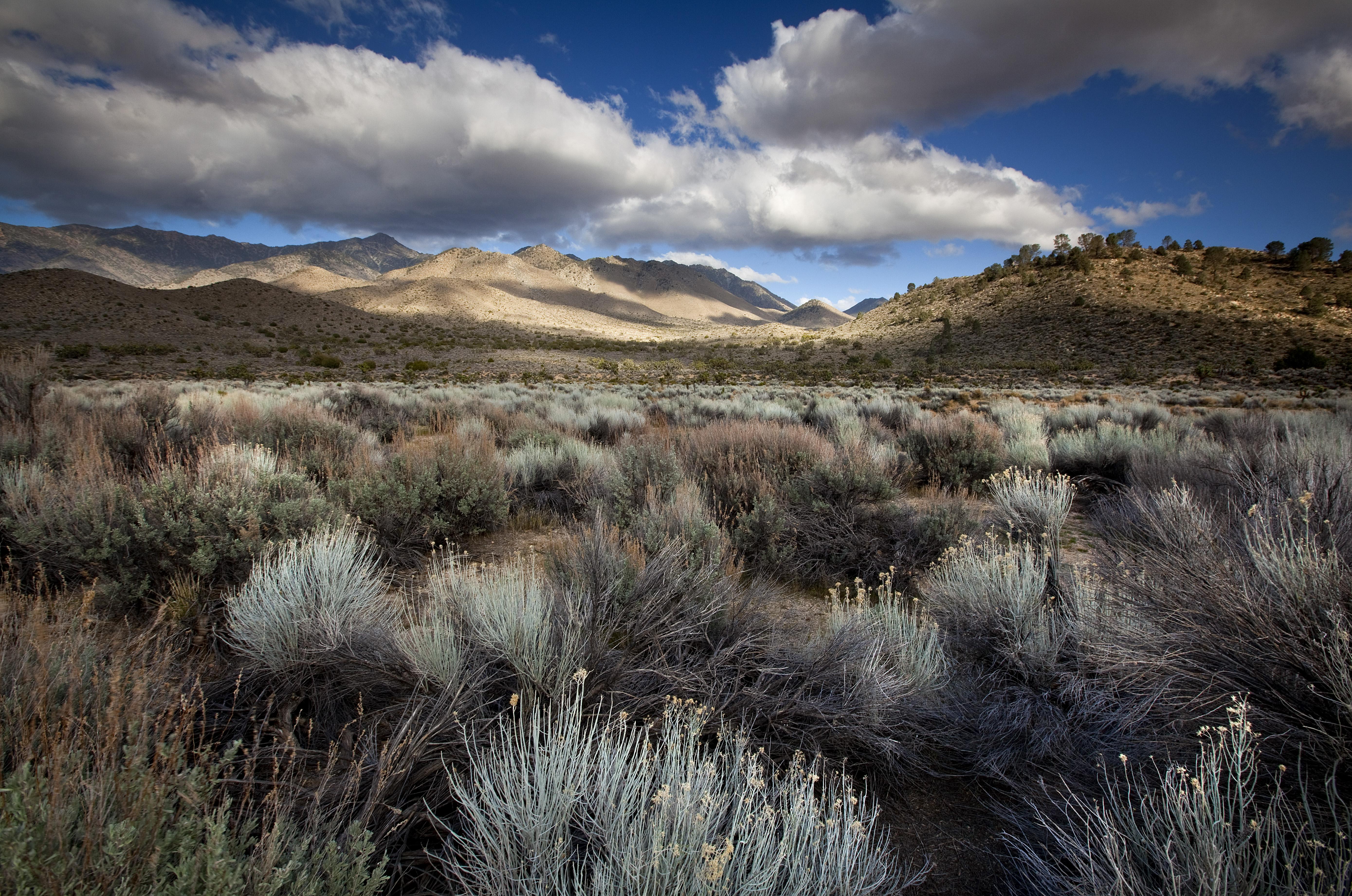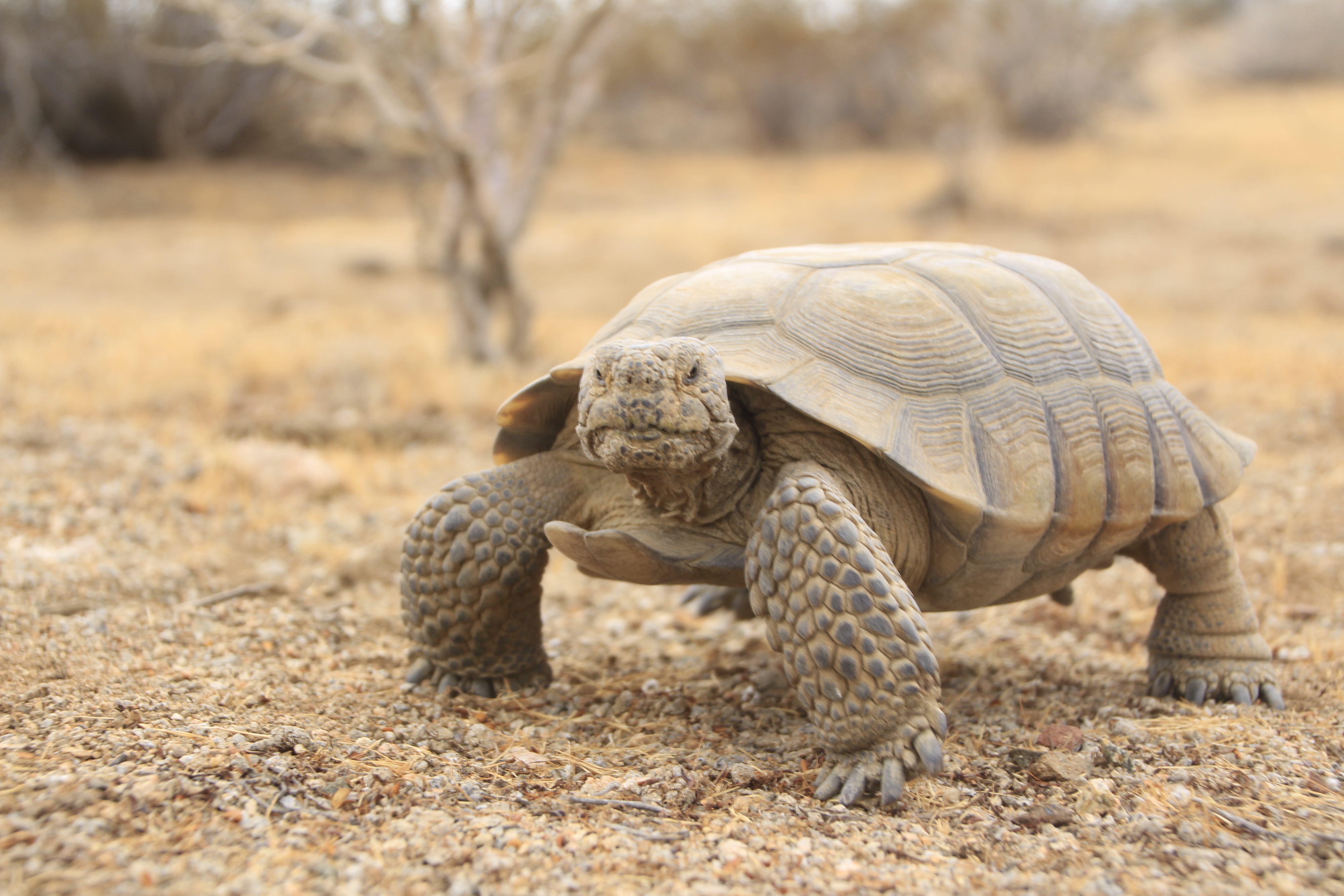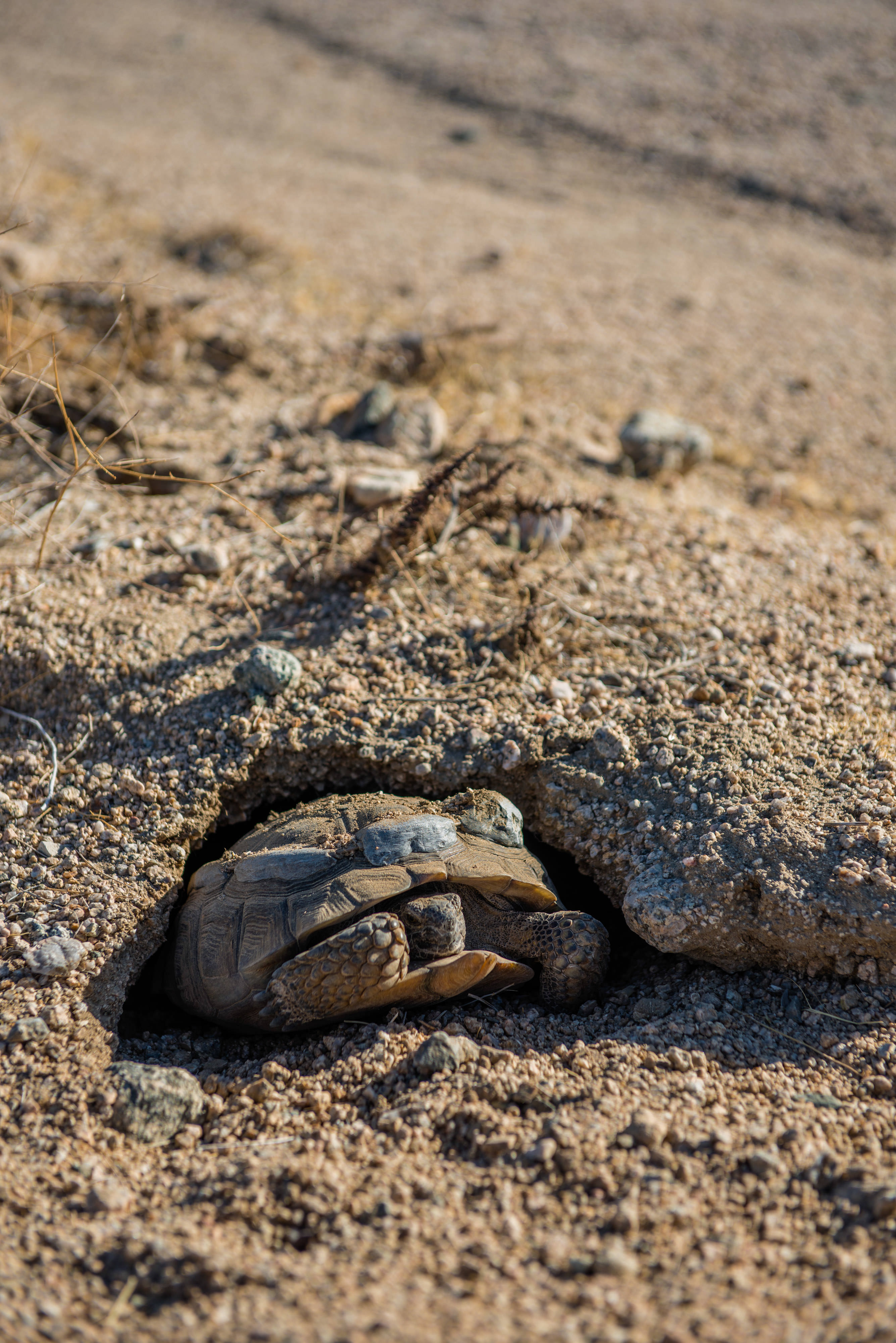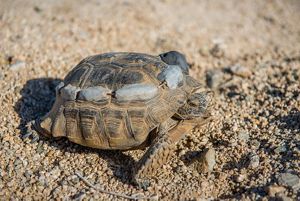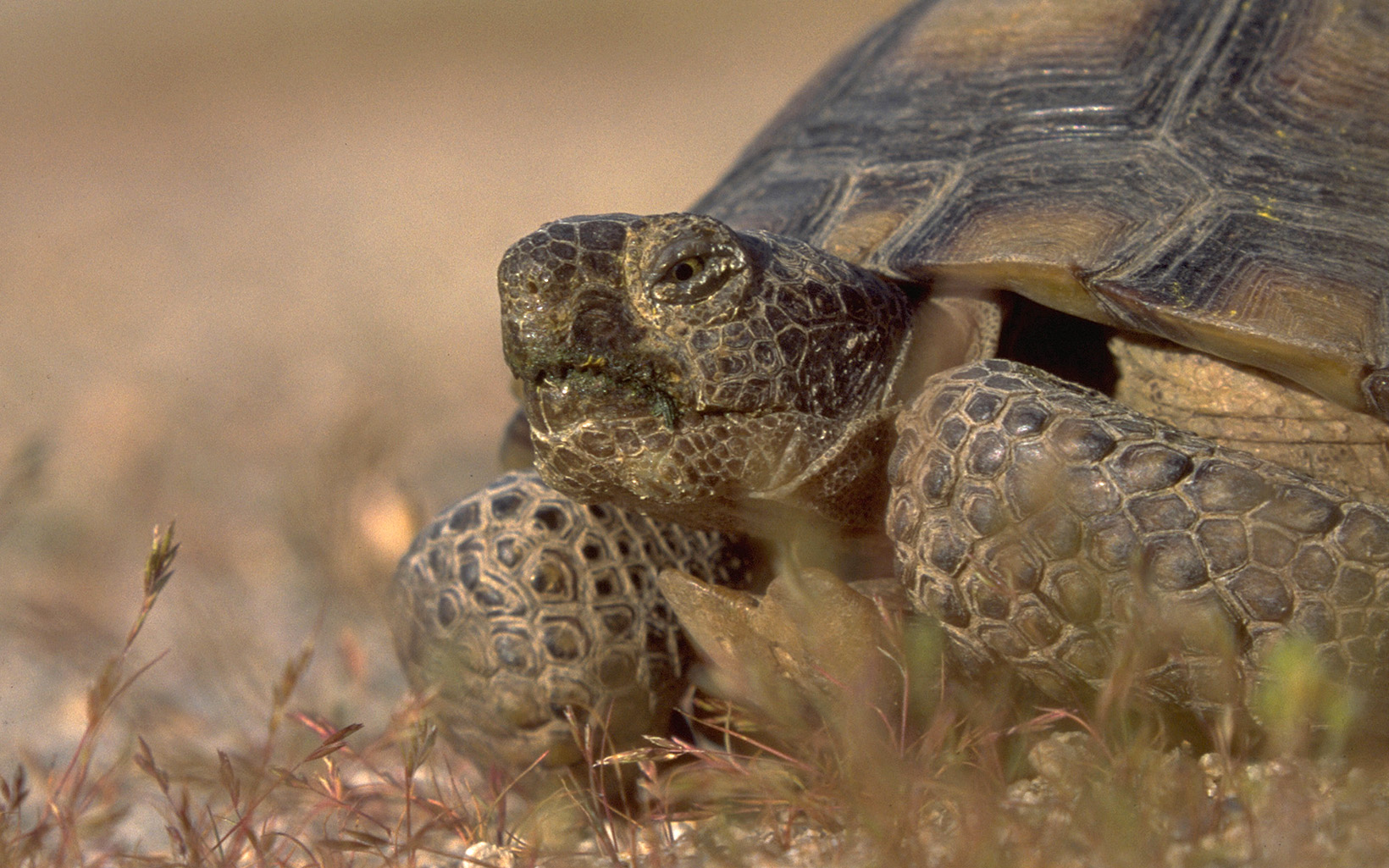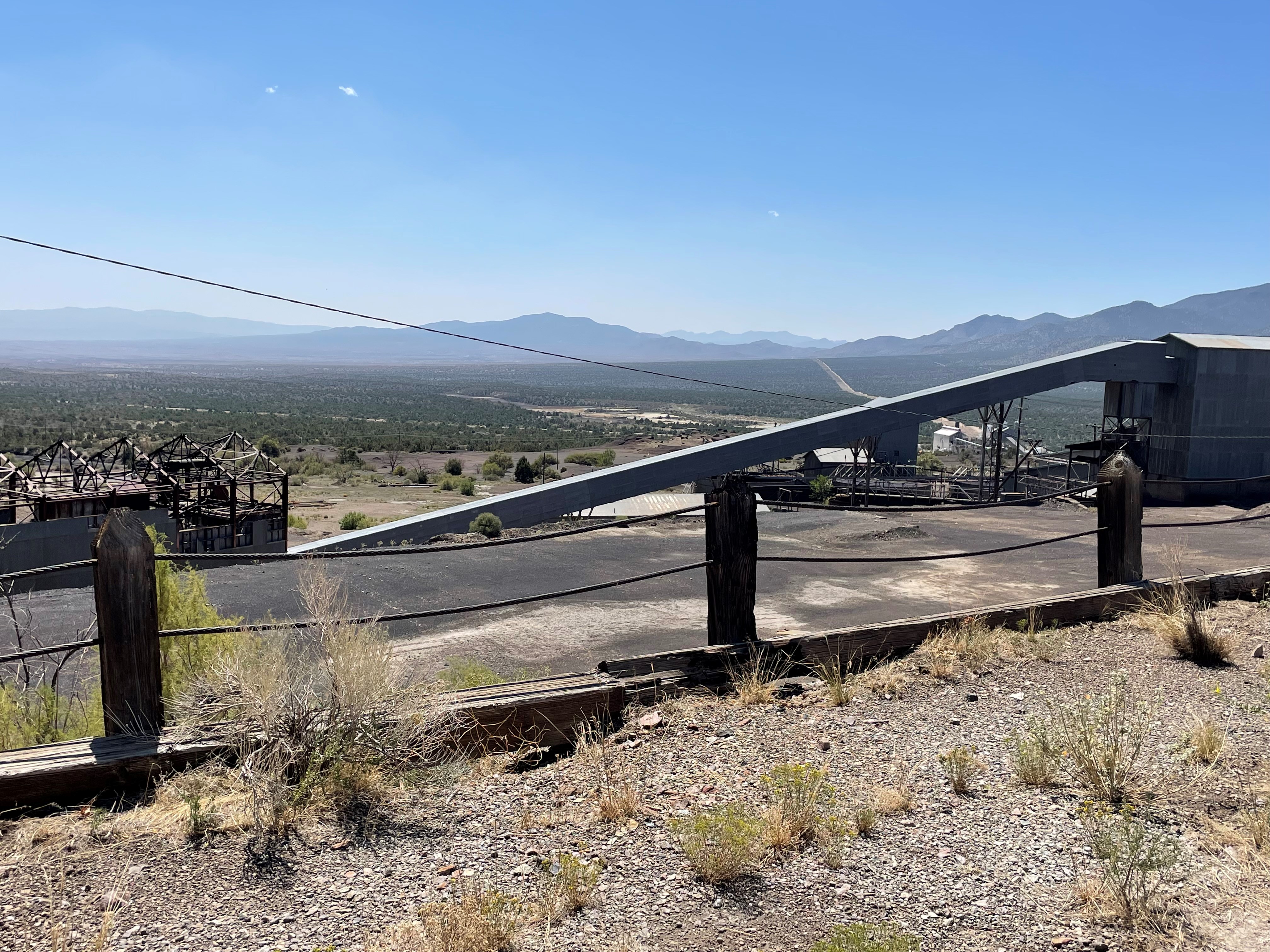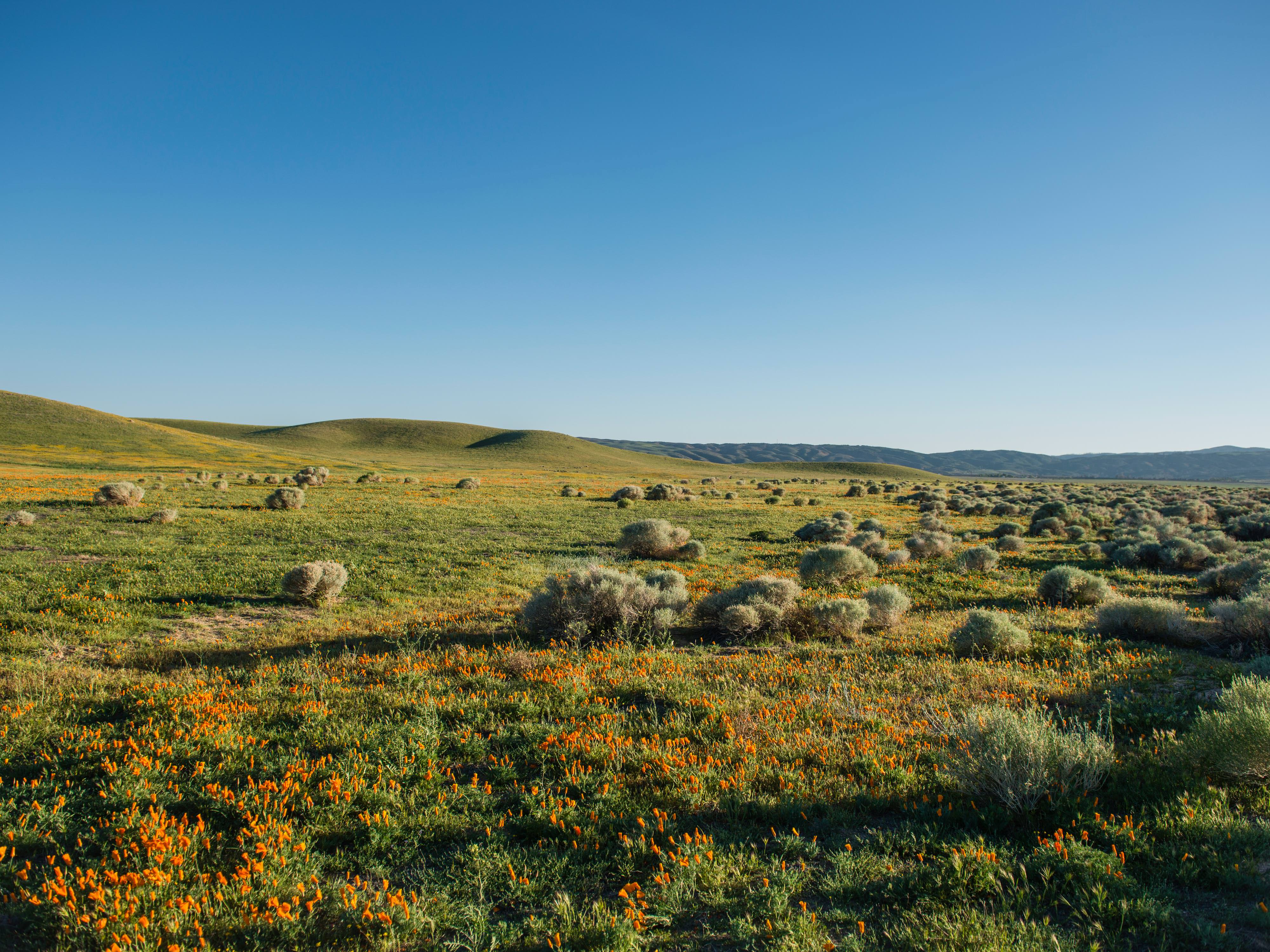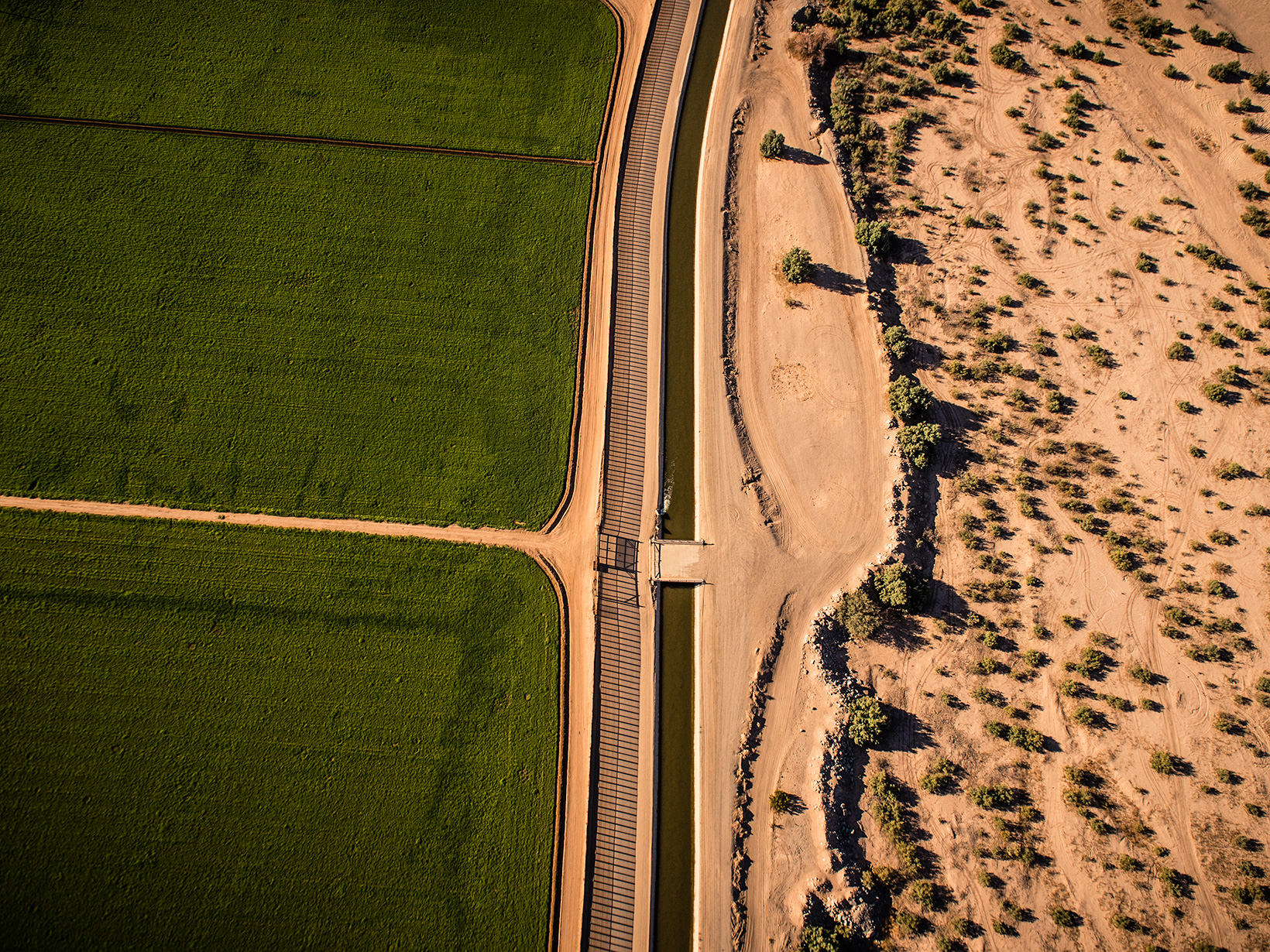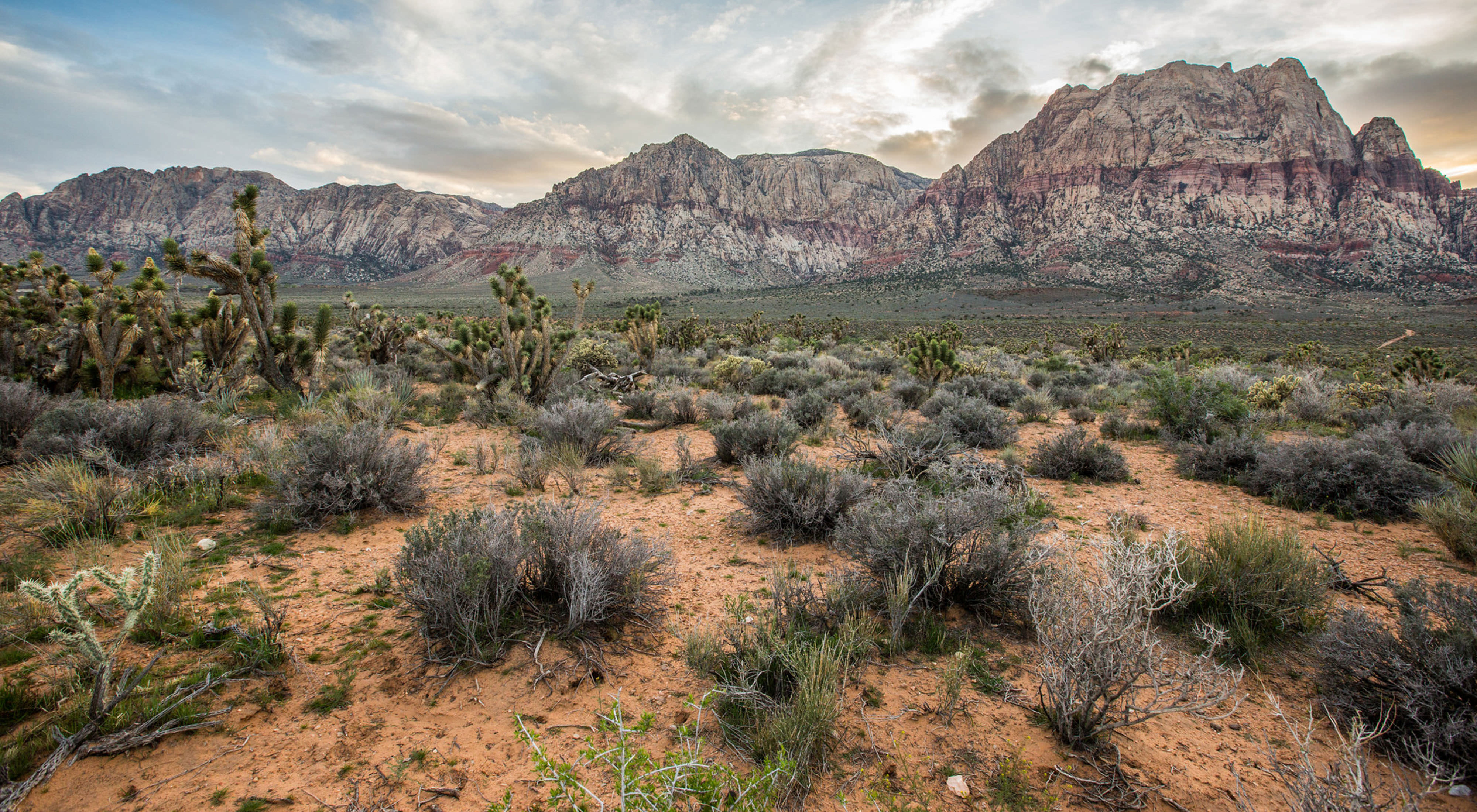Mojave Desert Tortoise
Facts about the Mojave desert tortoise (Gopherus agassizii) and how we’re working to save them and their habitat.
Mojave desert tortoise facts
- Lifespan: 30-50 years, but some can live to be over 80 years old
- Weight: 8-15 pounds (3.5-7 kilograms)
- Length: 9-15 inches (23-38 centimeters)
- Range: Only found in the Mojave Desert in California, Nevada, Arizona and Utah
- Conservation status: Listed as threatened under the Endangered Species Act
Protecting The Mojave Desert
You may think the desert is empty, but it’s actually teeming with activity and life.
Explore the MojaveMeet the Mojave Desert Tortoise
The Mojave desert tortoise (Gopherus agassizii) has many names: Mojave desert tortoise (sometimes spelled Mohave), Agassiz’s desert tortoise, and simply desert tortoise. If you’re very lucky, you might see one the next time you visit the Mojave Desert.
Desert tortoises might be slow moving, but they spend the majority of their time hiding in the shade of shrubs and rocks from the hot desert sun and from determined desert predators. They even hibernate in burrows, which they dig with their round legs, when it’s extremely hot and during the winter, making them a rare treat to spot. Your best chances are right after seasonal rains and when temperatures are between 79-93 degrees Fahrenheit (26-30 degrees Celsius).
Mojave Desert Tortoise Habitat
Mojave desert tortoises are a keystone species, which means they have a higher influence over their ecosystem than other species. Many other species use their burrows and benefit from having desert tortoises around, including the Gila monster, collared peccaries, roadrunners, and burrowing owls. They eat a variety of grasses, shrubs, cacti, and wildflowers, and get much of their water from succulents.
Mojave desert tortoises rely on areas with high plant species diversity both for food and protection from weather and predators. However, fires can easily destroy their desert habitat, which is not adapted for fire. When fires are more frequent, they can turn thriving desert landscapes into nonnative grasslands.
Mojave Desert Tortoise Adaptations
Desert tortoises are built to thrive in their desert environments. They can fully retract their heads and legs inside the shell when disturbed, protecting the softer body parts from predators. Although mortality is high for young tortoises, once they reach adulthood desert tortoises are rarely killed by predators.
Did You Know
Ravens are a major predator of Mojave desert tortoise babies, even causing substantial declines in populations. Ravens perch on power line poles near towns where they have a great view of baby tortoises.
Their front legs are slightly flattened so they can easily dig into desert sand and dirt and build shelters to keep warm on cold desert nights. They stay in these burrows in a light hibernation through the coldest part of winter, occasionally emerging if the weather is nice. Desert tortoises also use their burrows for temperature control when it gets too hot in the summer.
Mojave desert tortoises are usually solitary, but sometimes they share burrows. When males come across each other, they might fight for dominance by trying to flip one another over. Males are larger than females and can be identified by curved horns on the lower shell, beneath the neck. Once they reach adulthood, Mojave desert tortoises can live between 30-50 years in the wild, and sometimes up to 80 years. Unfortunately, due to habitat destruction desert tortoises are struggling for survival.
Threats Facing the Mojave Desert Tortoise
Did you know habitat loss is one of the biggest threats facing the desert tortoise today? Click into the tiles below to see how habitat loss can take different forms:
Protect the Desert to Protect the Desert Tortoise
The Mojave desert tortoise was listed as threatened in an emergency action by the U.S. Fish and Wildlife Service in the early 1990s. The Nature Conservancy joined with local governments and other partners to create Habitat Conservation Plans that protect desert tortoises. One plan resulted in creating the Red Cliffs Desert Reserve, a 60,000-acre protected area north of the city of St. George. By protecting this area for the Mojave desert tortoise we also protect other rare and sensitive species—the Gila monster, sidewinder rattlesnake, chuckwalla and peregrine falcon.
In 1994, TNC also acquired Walking Box Ranch in Nevada to protect the Mojave desert tortoise. This, along with two other land acquisitions in the area, brings the total acres preserved by TNC in the Piute Valley to 439,000. Additionally, we helped settle a major lawsuit over the listing of the species, and over $1 million was allocated for desert tortoise research.
Support our work protecting desert habitat in Utah and Nevada.
Bio-diversify Your Inbox
Get monthly updates on how our work protects valuable ecosystems and species.
